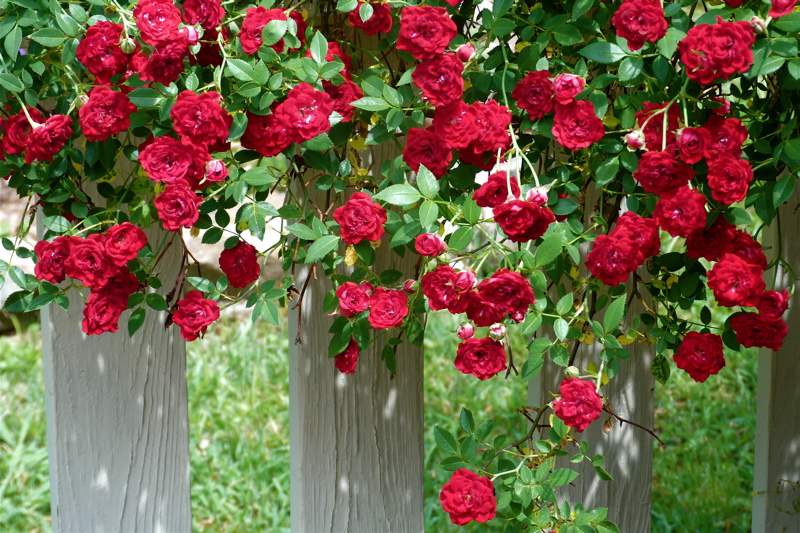Sometimes I love a plant in the beginning, but then for one reason or another the plant never reaches its potential in my garden. Other plants flourish and exceed even my most optimistic fantasies. Red Cascade rose is the latter, having stood the test of time, through seasons of drought and flood and frost, and through hot, muggy, bug infested summers thick with mold and mildew spores.
Red Cascade is classified as a miniature rose, because each deep red rose, although it contains many petals, is only about one inch in diameter.  But the flowers grow in large sprays, and the impact of Red Cascade in full bloom is huge.
But the flowers grow in large sprays, and the impact of Red Cascade in full bloom is huge. 
The flowers are long lasting when cut, and they are among the best for summer bouquets. It is a vigorous, spreading plant. I just measured mine, planted a decade ago at an outside corner of the picket fence enclosing our dog lot. It is over five feet tall and has spread eight feet down one side of the fence, seven feet down the other, and is still growing. The following photo shows how it arches over the dog house, which sits near the corner where Red Cascade is planted:
Red Cascade blooms repeatedly from mid spring till frost. Because of its cascading habit, it can be used as a ground cover on a slope, and it also can be trained up a trellis. I love the way it looks on our picket fence. I also think it would be spectacular sprawling across a stone wall. It would be pretty in a hanging basket for a while, but understand: It will outgrow the basket quickly! The long canes, especially the older ones, are fairly thorny. It doesn't require pruning, but one may want to prune it to maintain its size and shape.
Red Cascade grows in zones 6-9, in full sun to afternoon shade. It is tolerant of poor soil but like all roses, it prefers good, well drained garden soil. The small, glossy leaves are pest and disease resistant and require little spraying, only once or twice a season in my humid climate. If some leaves turn yellow and fall off, they quickly re-grow.
Ralph S. Moore introduced Red Cascade in 1976. It is easy to see why it is still a favorite.